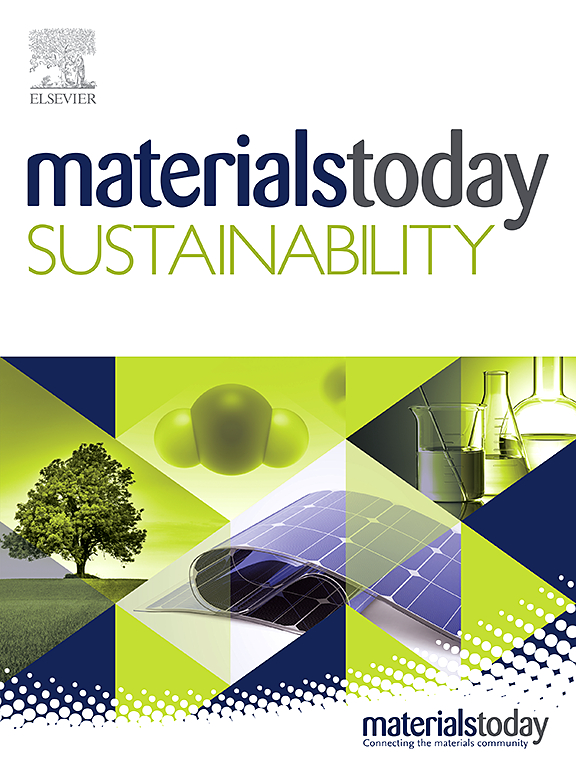A review on the evolution of ionic liquids: Sustainable synthesis, applications, and future prospects
IF 7.9
3区 材料科学
Q1 GREEN & SUSTAINABLE SCIENCE & TECHNOLOGY
引用次数: 0
Abstract
Ionic liquids (ILs) have emerged as a transformative class of materials, offering unique physicochemical properties such as low volatility, high thermal stability, and tunable solubility. Their evolution is categorized into four generations: first-generation ILs, primarily used as green solvents; second-generation ILs, designed for specific applications in catalysis and electrochemical systems; third-generation ILs, incorporating bio-derived and task-specific functionalities for biomedical and environmental applications; and fourth-generation ILs, focusing on sustainability, biodegradability, and multifunctionality. This review explores the synthesis, applications, and future scope of ILs across various domains, including biomedicine, renewable energy, industrial processes, and current industry applications. In biomedical sciences, ILs enhance drug solubility, improve targeted drug delivery, and serve as antimicrobial agents, offering novel solutions to pharmaceutical challenges. In the energy sector, ILs play a critical role as electrolytes in fuel cells, supercapacitors, and advanced battery technologies, facilitating efficient energy conversion and storage. Additionally, ILs contribute to CO2 capture and utilization, addressing global environmental concerns. Current industrial applications of ILs include their use as solvents and catalysts in petrochemical processing, biodiesel production, pharmaceutical synthesis, and metal extraction in mining industries. ILs are also employed in gas separation, electroplating, cellulose processing, and as lubricants in high-performance machinery due to their thermal and chemical stability. Their role in improving battery efficiency, polymer processing, and corrosion protection further highlights their industrial significance. The future of ILs lies in the development of smart, biodegradable, and recyclable materials with tailored functionalities for next-generation applications. Innovations in IL-based energy storage, precision medicine, and sustainable industrial processes will further expand their potential. As research progresses, ILs are expected to drive advancements in green chemistry, renewable energy, and biocompatible technologies, positioning them as key enablers of a sustainable and technologically advanced future.

离子液体的发展:可持续合成、应用及前景展望
离子液体(ILs)已经成为一种变革性的材料,具有独特的物理化学性质,如低挥发性,高热稳定性和可调的溶解度。它们的演变可分为四代:第一代液体化学剂,主要用作绿色溶剂;第二代ILs,专为催化和电化学系统的特定应用而设计;第三代ILs,结合生物衍生和特定任务功能,用于生物医学和环境应用;第四代ILs,侧重于可持续性、生物降解性和多功能性。本文综述了红外光谱在生物医药、可再生能源、工业过程和当前工业应用等领域的合成、应用和前景。在生物医学领域,il可增强药物溶解度,改善靶向药物递送,并可作为抗菌药物,为解决制药挑战提供了新的解决方案。在能源领域,液态硅作为电解质在燃料电池、超级电容器和先进电池技术中发挥着关键作用,促进了高效的能量转换和储存。此外,人工智能还有助于二氧化碳的捕获和利用,解决全球环境问题。目前的工业应用包括它们在石油化工加工、生物柴油生产、药物合成和采矿工业中的金属提取中用作溶剂和催化剂。由于其热稳定性和化学稳定性,il还用于气体分离,电镀,纤维素加工和高性能机械中的润滑剂。它们在提高电池效率、聚合物加工和防腐方面的作用进一步凸显了它们的工业意义。人工智能的未来在于开发智能、可生物降解和可回收的材料,并为下一代应用量身定制功能。基于il的储能、精准医疗和可持续工业过程的创新将进一步扩大其潜力。随着研究的进展,人工智能有望推动绿色化学、可再生能源和生物相容性技术的进步,使其成为可持续发展和技术先进未来的关键推动者。
本文章由计算机程序翻译,如有差异,请以英文原文为准。
求助全文
约1分钟内获得全文
求助全文
来源期刊

Materials Today Sustainability
Multiple-
CiteScore
5.80
自引率
6.40%
发文量
174
审稿时长
32 days
期刊介绍:
Materials Today Sustainability is a multi-disciplinary journal covering all aspects of sustainability through materials science.
With a rapidly increasing population with growing demands, materials science has emerged as a critical discipline toward protecting of the environment and ensuring the long term survival of future generations.
 求助内容:
求助内容: 应助结果提醒方式:
应助结果提醒方式:


